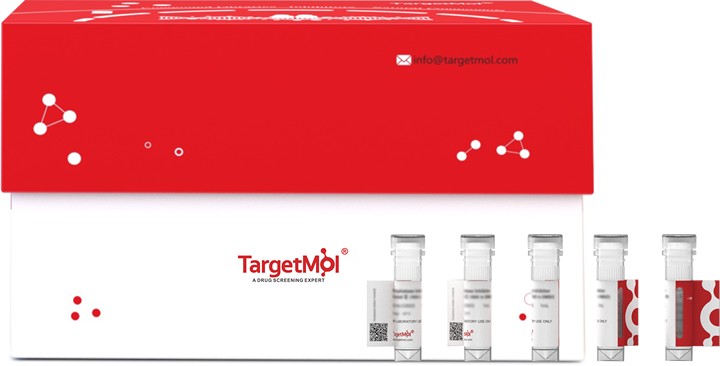购物车
全部删除  您的购物车当前为空
您的购物车当前为空
LIGHT/TNFSF14 Protein, Human, Recombinant (His) is expressed in HEK293 mammalian cells with His tag. The predicted molecular weight is 19 kDa and the accession number is O43557-1.

| 规格 | 价格 | 库存 | 数量 |
|---|---|---|---|
| 5 μg | ¥ 388 | 6-8日内发货 | |
| 10 μg | ¥ 629 | 6-8日内发货 | |
| 20 μg | ¥ 987 | 5日内发货 | |
| 50 μg | ¥ 1,980 | 5日内发货 | |
| 100 μg | ¥ 3,970 | 5日内发货 | |
| 200 μg | ¥ 5,930 | 5日内发货 | |
| 500 μg | ¥ 12,700 | 5日内发货 | |
| 1 mg | ¥ 25,900 | 5日内发货 |
| 生物活性 | Immobilized Human LIGHT, His Tag at 0.5 μg/ml (100 μl/well) on the plate. Dose response curve for Human LTBR, hFc Tag with the EC50 22.9 ng/ml determined by ELISA. |
| 产品描述 | LIGHT/TNFSF14 Protein, Human, Recombinant (His) is expressed in HEK293 mammalian cells with His tag. The predicted molecular weight is 19 kDa and the accession number is O43557-1. |
| 种属 | Human |
| 表达系统 | HEK293 Cells |
| 标签 | N-His |
| 蛋白编号 | O43557-1 |
| 别名 | tumor necrosis factor (ligand) superfamily, member 14,TR2,LTg,LIGHT,HVEML,CD258 |
| 蛋白构建 | Asp74-Val240 |
| 蛋白纯度 | > 95% as determined by Tris-Bis PAGE; > 95% as determined by HPLC |
| 分子量 | 19 kDa (Predicted); 25-30 kDa (Due to glycosylation) |
| 内毒素 | Less than 1EU per μg by the LAL method. |
| 蛋白性状 | Lyophilized powder |
| 缓冲液 | Lyophilized from 0.22μm filtered solution in PBS (pH 7.4). Normally 8% trehalose is added as protectant before lyophilization. |
| 复溶方法 | Reconstitute the lyophilized protein in distilled water. The product concentration should not be less than 100 μg/ml. Before opening, centrifuge the tube to collect powder at the bottom. After adding the reconstitution buffer, avoid vortexing or pipetting for mixing. |
| 存储 | It is recommended to store recombinant proteins at -20°C to -80°C for future use. Lyophilized powders can be stably stored for over 12 months, while liquid products can be stored for 6-12 months at -80°C. For reconstituted protein solutions, the solution can be stored at -20°C to -80°C for at least 3 months. Please avoid multiple freeze-thaw cycles and store products in aliquots. |
| 运输方式 | In general, Lyophilized powders are shipping with blue ice. Solutions are shipping with dry ice. |
| 研究背景 | LIGHT, also known as tumor necrosis factor superfamily member 14 (TNFSF14), is a secreted protein of the TNF superfamily. It is recognized by herpesvirus entry mediator (HVEM), as well as decoy receptor 3.This protein has been shown to stimulate the proliferation of T cells, and trigger apoptosis of various tumor cells. |